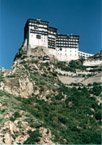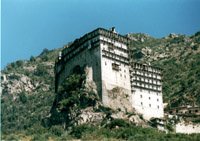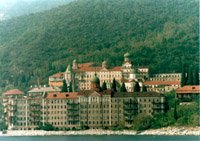NATURE AND THE NATURAL ENVIRONMENT OF MOUNT ATHOS

|
NATURE AND THE NATURAL ENVIRONMENT OF MOUNT ATHOS | 
|

The cultural heritage of Mount Athos is not limited only to the marvellous architectural constructions and the unique relics of the Holy Monasteries, Sketes and Cells, but it also extends to the incomparable and unique natural environment and to the landscape which surrounds these Holy Monasteries. A special feature of the Holy Mountain is its great variety of plants, animals and types of vegetation. This is due to the relative isolation of the Athos Peninsula, its geographical position, the variety of rock formations, the variegated terrain and the relatively great height of Mount Athos, which rises steeply, like a cone, to reach a height of 2,033 metres above sea-level, at a horizontal distance of only a few kilometres. It is also due to the variety of local climates which are created by the combination of the above factors and are reflected in the mosaic of its vegetation, which includes types ranging from the semi-desert ones of the rocky coasts as the arboreal euphorbia, through the Mediterranean types of vegetation as the wild olive, the lentisk, the phillyrea, the holm oak, the laurel,the arbute tree, the heather, et al., the sub-continental types as the oak, the chestnut, the black pine and the fir trees, the central European-continental types as the beech and maple trees, to the sub-alpine and alpine types.

In addition to this variety of species and types of vegetation, the Holy Mountain has a significant number of endemic species. Its main characteristic, though, is the naturalness of its ecosystems, at least as far as their qualitative composition is concerned. The presentation of the natural environment, in the Exhibition of the Treasures of Mount Athos, will be done by means of a photographic exhibition which will consist of four sections:

Spyros Dafis,
Professor Emeritus, University of Thessaloniki,
Supervisor of the Exhibition Unit "Nature and the Natural Environment"